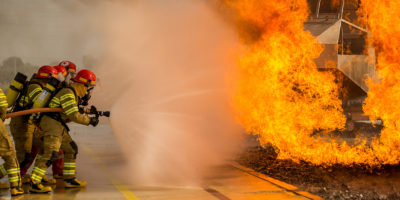Near Miss Reporting: (Part 2)
Posted: Nov. 5, 2019 • By Kevin Kohler

Near misses come in all sizes
From our previous blog we recall that a near miss is an incident that under slightly different circumstances would have caused a loss such as an injury or property damage. Although the term “near miss” sounds innocent enough, the potential consequences could range all the way to catastrophic. Consider these excerpts from an article in The Star, on Oct 12 2018 concerning a U.S. National Transportation Safety Board (NTSB) final report on an incident involving a Canadian airliner:
Safety officials say a near collision of airliners in San Francisco …was a few feet from becoming the worst crash in aviation history and underscores the need for faster reporting of dangerous incidents before evidence is lost. The pilots were slow to report the incident to superiors. By the time they did, the plane had made another flight and the cockpit voice recording of the close call was recorded over. The … jet swooped to just 18.2 metres above the ground while passing over other planes packed with passengers waiting to take off … (NTSB board member) Weener noted that other pilots were alert enough to turn on lights to warn the off-course … jet. Yet once the danger passed, he said, (the pilots) took no action (that would have prompted) “an intervention and evaluation of the (airline) crew.”
Near misses come in all shapes and sizes and yet they all present an opportunity for learning and, where the consequences are very serious, an opportunity to make immediate changes. We can’t learn from something that we have not heard about.
Is it worth spending a lot of time on minor near misses?

In our last blog we examined some of the criticisms associated with the Heinrich safety triangle that predicted a fixed ratio of serious incidents based on the number of less serious ones. Despite the criticisms, there is evidence that eliminating minor incidents improves safety and can lead to reductions in major incidents.
The concept of dealing with minor incidents to avoid major ones is still valid, even if establishing a fixed relationship between them may not be as straightforward as suggested by Hienrich and others. A relationship that may exist between the number and types of incidents that we experience, may not automatically apply across different classes of hazards. Serious but rare incidents will not automatically be addressed by reporting and investigating unrelated near misses.
Are we required to report near misses to the government?

Depending upon your federal or provincial jurisdiction you are required to report certain near misses. In Alberta you are required to report and investigate “Potentially Serious Incidents (PSI)” under the OHS Act. The Alberta government defines a PSI as:
“…any event where a reasonable and informed person would determine that under slightly different circumstances, there would be a high likelihood for a serious injury to a person.”
A PSI is a serious event in any jurisdiction and, depending upon the circumstances, it may need to be reported to the government. Investigating all PSI incidents to prevent an actual loss should be a minimum requirement within your health and safety system.
Best Practices – Promoting Near Miss Reporting
There are clear benefits to promoting a culture of reporting near misses. To support this culture we can:
- Clearly communicate our near miss reporting policies and procedures
- Establish near miss reporting goals and objectives
- Ensure that the near miss reporting process is educational and not punitive
- Share information related to near miss incidents and investigations, and
- Promptly address action items from investigations
Near miss reporting should be a cornerstone of any safety program.
Related Articles

Young Workers
Who are young workers? There are different definitions for young workers, Statistics Canada classifies workers between the ages of 15 […]
Read Article
Fire Safety Plans
In North America fires annually cause over 10,000 injuries, 3,000 deaths and over $7 billion in direct damages. Most of […]
Read Article